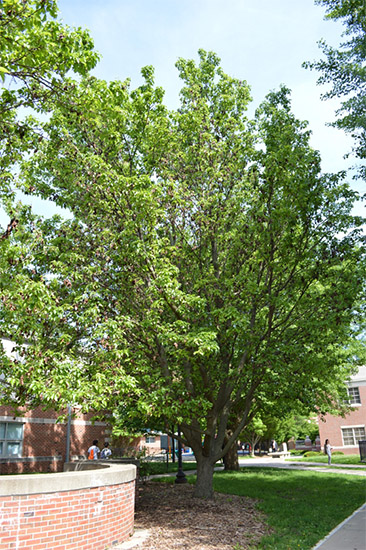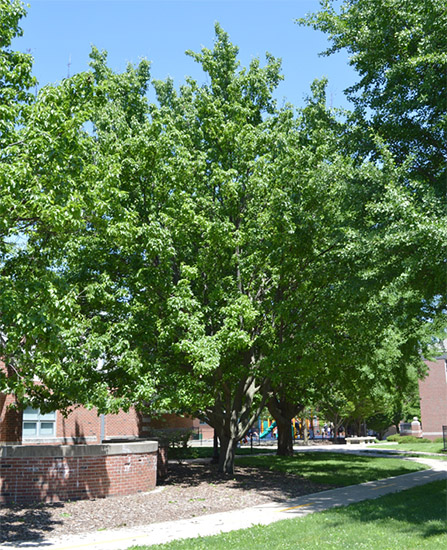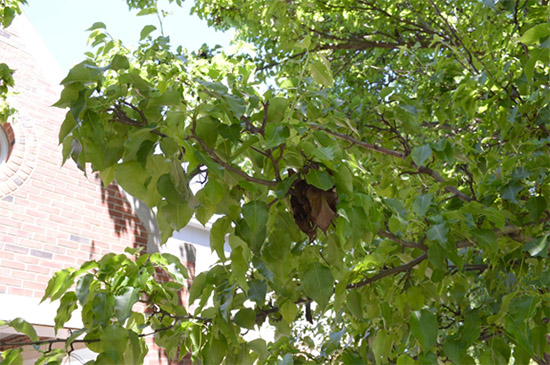Issue 8, June 14, 2013
Callery Pear Blights
A year ago, many Callery Pears were showing unsightly symptoms associated with bacterial blast, a disease which caused blighted leaves and shoots throughout the affected tree’s canopy. Pictures and more details on the symptoms of this disease can be found in last years newsletter http://hyg.ipm.illinois.edu/article.php?id=362.
At this time last spring, my colleagues and I were answering many phone calls and emails regarding this disease. Unfortunately, we were unable to definitively answer questions on how the affected trees would respond to this disease infection in the following years. Reports of this disease, from previous occurrences, did not describe how the trees responded in the following years. We recommended a wait and see approach, suspecting most trees would show no symptoms the following year. We knew the bacterial pathogen responsible was considered a weak pathogen, and that it likely took advantage of the favorable environment provided by last spring’s unusual weather. As a result, we suspected the infection would be halted by warm, dry weather and the tree’s natural defense mechanisms. As it turns out, hot and dry conditions defined the summer of 2012. Needless to say, I was anxious to see how the trees would appear this spring.
A year later, many of the Callery pears severely affected in 2012 show no signs of new infection. A few other trees show similar blight symptoms as seen last year; however, new infections are much less severe and are confined to only a few branches. The pictures below are of the same tree and were taken almost one year apart. Close inspection revealed only a few dead branches and leaves still attached from last year as well as some new blighted leaf symptoms. The University of Illinois Plant Clinic cultured tissues from the newly affected leaves on a number of Callery pear samples. This year, the plant clinic has mostly isolated Fire Blight (Erwinia amylovora). Though, some samples still tested positive for Pseudomonas sp., the pathogen responsible for Bacterial Blast.
Fire Blight is a difficult disease to control, as there are no effective management options once a tree is infected. Blighted tissues and branches can be pruned out during dormant season. If you can’t wait for dormancy, try to prune in an extended dry period and disinfect pruning tools after every cut. The bacterium can spread further down the stem, ahead of the canker. Unfortunately, this means wood should be removed 8-10 inches below the edge of the visible canker.
Chemical options are limited, especially for home growers. Timing of sprays is also critical. Commercial growers should apply copper products in the dormant season and streptomycin at 4-5 day intervals throughout bloom. Fertilization and watering are not recommended. Such practices will promote lush growth, which is more susceptible to infection by the fire blight bacterium.

Photo 1. Bacterial Blast on Callery Pear. Blighted leaves and stems scattered throughout the canopy. Photo taken May 2012.

Photo 2. Callery Pear, one year after bacterial blast infection. Majority of canopy is symptom free. Overall, trees look significantly better than in 2012. Photo taken June 2013.

Photo 3. Blighted leaves on Callery pear June 2013. This year, symptoms are less severe and localized to individual branches. Symptoms in 2012 affected entire tree canopy.
Author:
Travis Cleveland